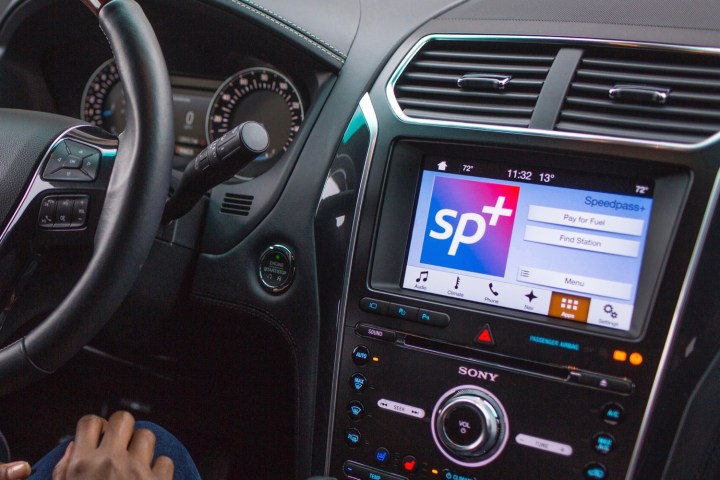
At CES 2017, Ford unveiled two new apps that cover some of the more tedious aspects of driving. Launched in concert with ExxonMobil, Speedpass+ is meant to expedite paying for gas, while DriverScore grades a driver’s performance in order to help lower insurance rates.
Ford claims to be the first automaker to integrate ExxonMobil’s Speedpass+ app, allowing drivers to pay for gas using the touchscreen or voice controls of their cars’ Sync 3 infotainment systems. The car uses GPS to determine which station it is at, and the driver simply tells the app to initiate payment, and which pump they are at. The app also allows customers to accrue ExxonMobil Plenti reward points, and can automatically pull up a list of nearby gas stations when the fuel gauge drops below a certain level.
Developed by IVOX, DriverScore grades driver behavior, much like the devices insurance companies encourage customers to plug into their dashboards. But this app is associated with a person’s smartphone, rather than the car. This ensures the score is related only to that individual, rather than a vehicle that might have multiple drivers. That prevents any lead-footed members of a household from bringing down everyone else’s scores.
The app itself shows only the driver’s score, and not specific data points. If users allow it, DriverScore can access vehicle data to make its judgments. It looks at speed, acceleration, braking, location, and time of day. An initial score is issued after the first 50 miles, and scores are cumulative for the month after that. Users can present these scores to insurance companies and get quotes using the app’s DiscountZone feature.
The two new apps were part of a slew of Sync 3 updates Ford announced at CES. It also announced AppLink apps for Sygic smartphone-to-car navigation projection and the Samsung Gear S2 and S3 smartwatches. In addition to apps, Ford will roll out Amazon Alexa voice control connectivity, and an in-car Wi-Fi hot spot.


